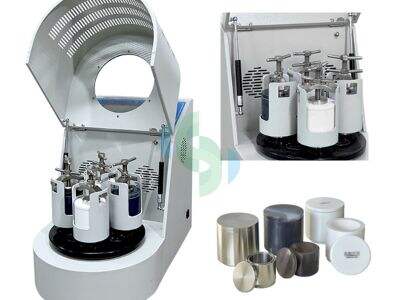When it comes to grinding media, our most popular materials include zirconia and alumina. You’ll also find materials including tungsten carbide, stainless steel and agate. These small but powerful beads are generated by outfits like Nanjing Chishun, companies that specialize in ball grinding machine products that make industrial manufacturing better.
The ceramic grinding balls will last effectively 10 times longer than the zirconium oxide balls (steel, and Glass) resulting in much less expense and use of time.
Conventional steel balls, meanwhile, wear out quickly requiring constant replacement. This can lead to a lot of downtime in the lab sufficient to fashion a disruption in research. But Nanjing Chishun ceramic grinding balls are more durable and higher quality. This in turn means less time spent swapping out balls and more time grinding, ultimately helping labs get results faster.
Ceramic balls have an even and smooth surface which contributes to a more efficient grinding process, especially when it comes to a fine particle size.
A significant benefit of ceramic grinding beads is a highly effective, extremely smooth grinding and surface, which ensures the high-quality properties of the ground product. This ball mill grinding machine is useful in grinding and mixing materials finer particles. Whereas other types of grinding balls have rough surfaces, Nanjing Chishun’s ceramic ones can make particles into very fine sizes, which is often needed for detailed scientific analysis, he said.
Ceramic balls have a high density and hardness, making their grinding efficiency superior to those of the other type of grinding media, thus ensuring faster processing times.
Ceramic grinding balls are smooth and often dense as well as hard. That’s because they can crunch through materials more quickly than their softer counterparts. Using such balls, the same amount of material can be processed in much less time in a lab mill. Quicker processing allows labs to be more efficient and get results faster.
Ceramic balls are non-reactive and ideally spherically shaped to help to reduce the possibility of contamination of samples and milling equipment.
Another major advantage of ceramic grinding balls is that they are impervious to the substances being ground. This is important for labs because it prevents the samples from being adulterated. Other balls could leave behind small pieces of metal or other materials in the samples, potentially ruining experiments. But not with the ceramic balls of Nanjing Chishun.
Although their concept is less efficient (generally with average life time less than 6 months and the high raw material cost and long transportation – even more than this value) it’s long life design and reputation of production may be exported to dish type or that type based laboratory clinker mills and they can save money for them.
Although ceramic grinding balls might cost quite a bit more to purchase upfront, for the most part, they are the less expensive option in the long run.
They save labs money on replacements and help them get more done in less time, because they last longer and work faster. This makes them a great choice for any lab wanting to its grinding process. The use of ceramic grinding balls is very innovative, and it gets out of traditional grinding media production/steel balls that can considerablly reduce the cost in laboratory use. These grinding balls for ball mill are durable, efficient, and are ideal for grind-mode beans; they are also very non-reactive, which makes for better taste and less responsibility in the final drink. Laboratories that want efficient milling have this benefit to get, by securing ceramic grinding balls from a trusted supplier such as Nanjing Chishun.
Table of Contents
- The ceramic grinding balls will last effectively 10 times longer than the zirconium oxide balls (steel, and Glass) resulting in much less expense and use of time.
- Ceramic balls have an even and smooth surface which contributes to a more efficient grinding process, especially when it comes to a fine particle size.
- Ceramic balls are non-reactive and ideally spherically shaped to help to reduce the possibility of contamination of samples and milling equipment.
- Although ceramic grinding balls might cost quite a bit more to purchase upfront, for the most part, they are the less expensive option in the long run.

 EN
EN
 AR
AR
 BG
BG
 CS
CS
 DA
DA
 NL
NL
 FI
FI
 FR
FR
 DE
DE
 EL
EL
 HI
HI
 IT
IT
 JA
JA
 KO
KO
 NO
NO
 PT
PT
 RO
RO
 RU
RU
 ES
ES
 SV
SV
 TL
TL
 ID
ID
 SR
SR
 VI
VI
 SQ
SQ
 HU
HU
 TH
TH
 TR
TR
 FA
FA
 MS
MS
 BE
BE
 IS
IS
 BN
BN
 LO
LO
 LA
LA
 MN
MN
 KK
KK
 UZ
UZ
 LB
LB
 XH
XH


